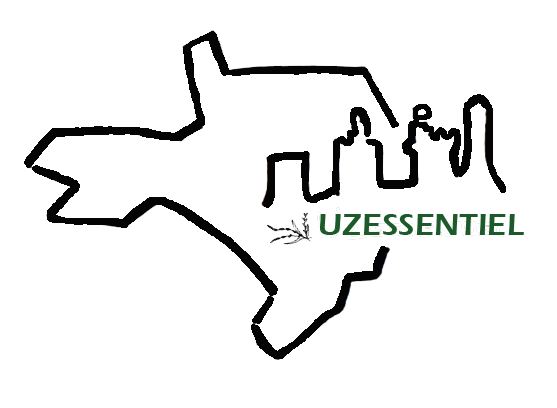Visit to the chapel of Sainte-Agnès, in Saint-Paulet-de-Caisson
FR - Listed as a Historic Monument since 1974, Sainte-Agnès is a small Romanesque chapel set amidst fields and vines, a stone's throw from Saint-Paulet-de-Caisson.

Situated just over 40 km from Uzès, just 5 km from Pont-Saint-Esprit and 7 km from the Chartreuse de Valbonne, Sainte-Agnès was probably built in the 12th century on the ruins of a rectangular ‘ancient pre-Christian place of worship’.
Its semicircular apse, ‘vaulted in the shape of a cul-de-sac’, is striking when you approach it, but it also hints at the richness of its interior.
In addition to the ‘triumphal arch, 5 decorative arches correspond to the 5 outer sides’ (pop culture gouv.fr).
|
Did you know? Saint-Paulet-de-Caisson was first mentioned in 1209 under the name Sanctus-Paulus de Caysson. In 1384, it was given the name Sanctus-Paulus de Cayssono and then Locus Sancti-Pauleti de Cayssano in 1461.
|
Restored between 1976 and 1984 by the Association de Sauvegarde de la Chapelle Sainte-Agnès, this fine example of Languedoc Romanesque art (in particular for its ‘pentagonal chevet lit by its three single-splayed apsidal bays’) proudly displays its sober silhouette, its square bell tower being a call to meditation.
|
Romanesque art in Languedoc? Closely related to Provençal Romanesque art (read our paper A walk in Saint-Gilles), reflecting Roman and Visigothic influences (Languedoc was part of the Visigothic kingdom of Toulouse from 419 to 517 then of the kingdom of Toledo from 507 to 711) and Lombard influences (like the abbey of Saint-Guilhem-le-Désert), Romanesque art in Languedoc is also linked to Hispano-Moorish architecture.
|
Today, the chapel hosts a wide range of cultural events from spring onwards.
It's a unique opportunity to enjoy a place rich in Gardois heritage history.
Sources and further information: Association Sauvegarde de la chapelle Saint-Agnès, Saint-Paulet-de-Caisson town hall website, POP: the French open heritage platform, wikipedia.







